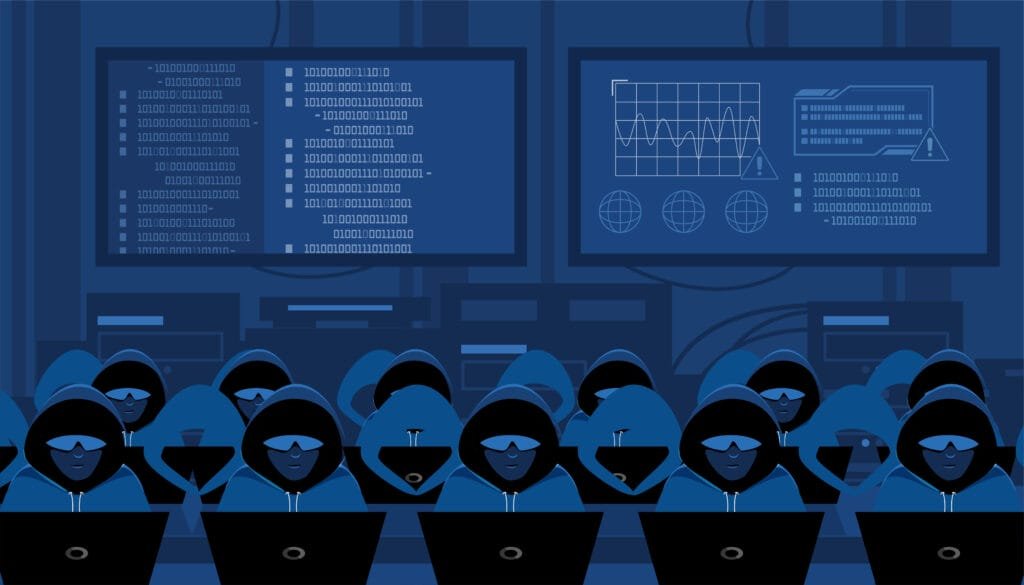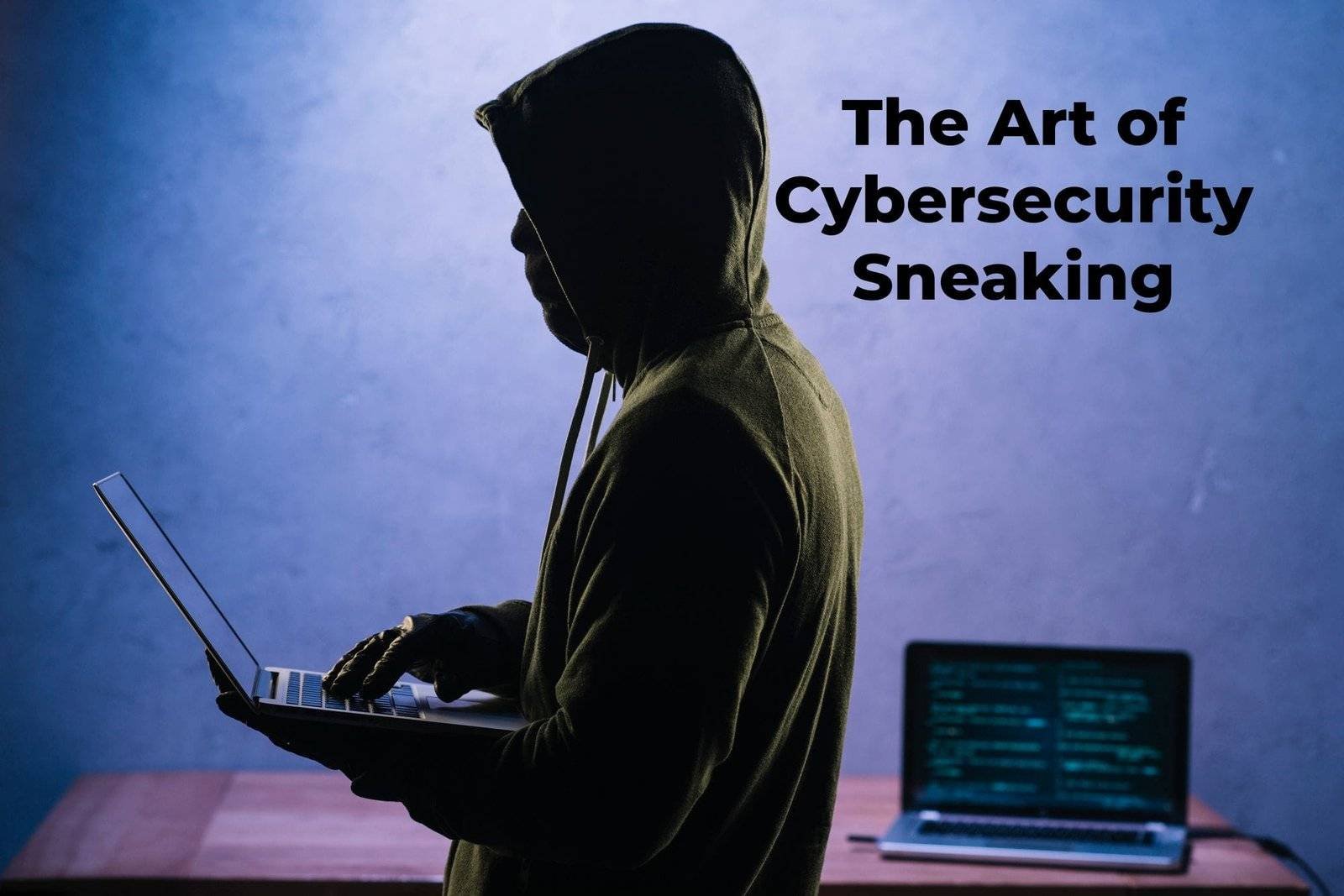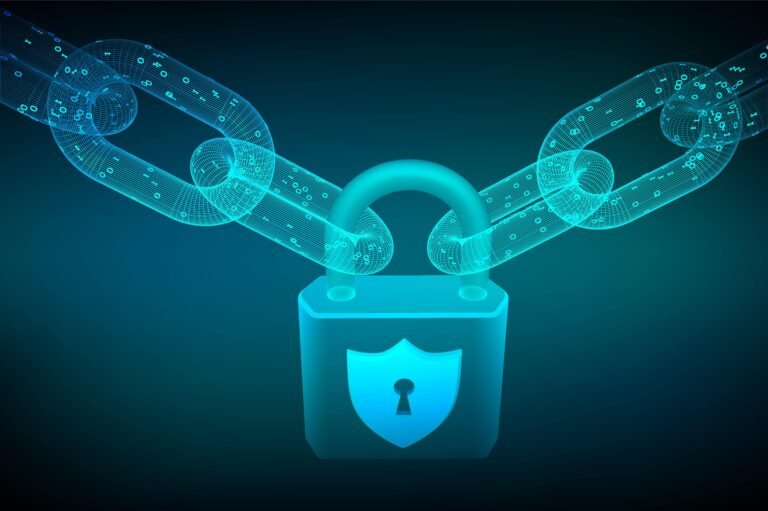Behind the Screen- Mastering the Subtle Art of Cybersecurity Sneaking
Learning the art of cybersecurity stealth has become essential in the ever-changing field of cybersecurity, where breaches and threats are a continual concern. As we explore the subtle aspects of this ability, we expose the methods and approaches that operate in the background to protect digital entities from prying eyes.
Introduction
Unveiling the world of cybersecurity
There are many challenges in the digital world, and cybersecurity is there to protect you from them all. This article delves into the stealth strategies used in the creative practice of cybersecurity sneaking.
The rise of cybersecurity threats
The frequency and sophistication of cyberattacks are rising, and conventional security measures are frequently insufficient. The dynamic response to the ever-evolving nature of threats is cybersecurity stealth.
The need for mastering subtle cybersecurity techniques
Advanced cybersecurity stealth becomes an essential skill for individuals and businesses alike in an era where standard protections are ineffective.
Understanding Cybersecurity Sneaking
Learning the deceptive art of cybersecurity sneaking has become essential in the broad and dynamic field of cybersecurity. This section goes into great detail about cybersecurity sneaking, explaining what it is, how to stay under the radar, and why it is so important in today’s digital world.
Defining Cybersecurity Sneaking
Fundamentally, cybersecurity sneaking is the application of sophisticated strategies and techniques to avoid detection online. The proactive strategy of cybersecurity stealth emphasizes caution, agility, and the capacity to outwit any attackers, in contrast to typical cybersecurity procedures that concentrate on improving defenses.
It is, essentially, the digital version of an expert spy moving through a challenging environment, avoiding discovery and fighting against attackers. Gaining an understanding of the subtleties of this concept paves the way for delving into the complex world of cybersecurity sneaking.
The Art of Staying Undetected
One of the fundamental goals of cybersecurity is to be undetectable to potential attackers. This calls for a variety of intricate strategies, such as hiding digital footprints and using encryption techniques. The skill is in setting up a situation where potential attackers are blind to the security controls, making their attempts pointless.
We’ll get into certain methods used in the art of avoiding detection in this section. Talks about the usage of virtual private networks (VPNs), sophisticated encryption techniques, and the planting of digital decoys in key locations to draw attention away from important systems might be included.
Importance in the Digital Landscape
The complexity of the digital environment is making cybersecurity sneaking more and more crucial. Even while they are crucial, traditional cybersecurity measures might not be enough to stop cyber enemies’ ever-changing strategies. With the help of cybersecurity sneaking, individuals and organizations can be proactive in preventing potential threats before they materialize.
This section of the essay will illustrate actual situations where cybersecurity stealth has been essential in averting cyberattacks and data leaks. To emphasize the crucial part this subtle art plays in the overall cybersecurity strategy, case studies, and examples will be provided.
Perplexity in Cybersecurity Sneaking

Because cybersecurity is a dynamic field with constantly changing threats, it becomes strategically vital to introduce confusion. This section delves into the idea of confusion in cybersecurity sneaking, emphasizing how to maneuver around the intricate digital landscape, confuse possible attackers, and put into practice practical security-enhancing methods.
Navigating the Complex Digital Terrain
The digital landscape is essentially complex, consisting of an extensive web of interrelated systems and information. Sneaking cybersecurity involves a vital element of navigating this complexity. Creating a difficult environment for potential attackers involves knowing the intricacies of the digital realm, spotting possible vulnerabilities, and carefully placing protections.
This section will go into the different aspects that contribute to the complexity of the digital terrain, including network topologies, diverse operating systems, and the variety of apps running simultaneously. Cybersecurity sneaking navigates this complexity to take advantage of the confusion it causes, making it more difficult for attackers to identify important assets.
Creating Confusion for Potential Threats
Adding to the complexity of the digital landscape, the next stage of cybersecurity intelligence is actively generating confusion for possible attackers. Predictability and patterns are frequently used by adversaries to take advantage of weaknesses. Cybersecurity experts try to upset these patterns by adding aspects of uncertainty, which throws enemies off guard.
The employment of deceptive decoys, obfuscation techniques to hide real system activity, and the deliberate release of false information are a few examples of confusion tactics. This section is going to shed light on these strategies’ use while emphasizing how well they work to keep opponents off guard.
Burstiness in Cybersecurity Sneaking
The idea of burstiness is essential to staying ahead of any dangers in the field of cybersecurity. This section delves into the importance of unpredictability, the dynamic strategies used to attain burstiness, and the careful balancing needed to preserve security mechanisms that work.
The Significance of Unpredictability
The idea of unpredictability is central to burstiness. To take advantage of weaknesses in security measures, cyber adversaries frequently depend on seeing patterns and regularities in those measures. Cybersecurity sneaking seeks to break these patterns by adding elements of unpredictability, making it difficult for attackers to anticipate and successfully defeat security solutions.
This section of the essay will explore why cybersecurity sneaking depends significantly on surprise. It confuses potential attackers and gives the defense strategy as a whole another level of complication. Adopting tactics that embrace the unexpected makes it harder for cyber adversaries to plan and carry out successful operations.
Dynamic Approaches to Burstiness
Burstiness can only be attained by dynamic, constantly evolving cybersecurity strategies. To keep one step ahead of possible dangers, this involves proactive strategy modification and continual assessment of security measures. Cybersecurity experts must always be on the lookout for new strategies and modify their burstiness plans accordingly.
The paper will examine case studies and actual instances where dynamic methods to burstiness have successfully prevented cyberattacks. It could include situations where enemies have been confused and unlawful access has been stopped by sudden changes in security measures, network setups, or encryption techniques.
Balancing Burstiness Without Compromising Security
As important as it is to introduce burstiness, it is just as critical to maintain a delicate equilibrium. Excessively variable security protocols may result in vulnerabilities and operational difficulties. This section will provide insight into how cybersecurity experts combine the need for surprise with preserving the integrity of security procedures.
Dynamic burstiness techniques that are informed by machine learning algorithms, constant monitoring, and advanced threat intelligence may be discussed. By understanding the possible drawbacks associated with extreme unpredictability, readers will acquire a sophisticated view of burstiness implementation that does not jeopardize overall security.
Specificity in Cybersecurity Sneaking
Specificity is a key component of successful protection strategies in the complex dance of cybersecurity. This section delves into the significance of customizing cybersecurity sneaking techniques to distinct scenarios, and the level of accuracy needed in implementation, and provides practical instances illustrating the effects of particular strategies.
Tailoring Strategies to Unique Situations
In the world of cybersecurity sneaking, it is important to understand that no two cybersecurity scenarios are the same. Developing security solutions that specifically address the particular problems at hand, recognizing tailored vulnerabilities, and understanding the particular nuances of an organization’s digital environment are all necessary when customizing techniques to meet specific needs.
The need for flexibility in cybersecurity sneaking will be covered in detail in this section of the essay. It will go over how experts evaluate particular aspects of their surroundings, such as data kinds, network architectures, and possible weak points. Cybersecurity sneaking becomes a more effective defense mechanism when techniques are customized accordingly.
Precision in Execution
Cybersecurity stealth requires specificity and accuracy in implementation. This entails the careful application of customized tactics to ensure that security controls are in perfect balance with the vulnerabilities that have been found. To successfully protect vital assets and prevent needless disruptions to regular operations, precision is essential.
The procedures and techniques employed by cybersecurity experts to carry out exact sneaky strategies will become clear to readers. This could involve the application of vulnerability assessments, penetration testing, and the implementation of focused security policies made to address specific vulnerabilities without creating unnecessary conflict.
Examples of Specific Cybersecurity Sneaking Techniques
This section will provide real-world examples of unique cybersecurity sneaking approaches to highlight the importance of specialization. These could range from the customization of intrusion detection systems to recognize organization-specific threat patterns to the production of specialized phishing simulators that look like the organization’s communication style.
Readers will understand how specificity improves the effectiveness of cybersecurity sneaking by the examples provided. These case studies will highlight the observable advantages of customizing strategies to particular circumstances, encouraging people and institutions to embrace a more sophisticated and customized approach to their cybersecurity procedures.
Context in Cybersecurity Sneaking

The capacity to adjust to new threats is critical in the rapidly changing and dynamic field of cybersecurity. The significance of context in cybersecurity sneaking is addressed in this part, with a focus on the necessity of keeping up with changing threats, taking the larger cybersecurity landscape into account, and remaining applicable in various situations.
Adapting to Evolving Threats
The cyber threat landscape is dynamic, with new methods and vulnerabilities appearing often. Keeping up with changing threats is a fundamental component of cybersecurity sneaking. This involves maintaining close tabs on threat intelligence, keeping up with the newest attack vectors, and proactively modifying methods to prevent new threats.
This section of the essay will examine the kind of thinking necessary for successful adaptation. It might go over how cybersecurity experts can foresee future dangers, how to use historical data to identify possible attack routes, and how to use threat intelligence systems to learn about how cyber threats are changing.
Considering the Broader Cybersecurity Landscape
It is important to take into account the larger cybersecurity landscape in addition to concentrating on particular sneaky techniques. This involves being aware of global cybersecurity advancements, industry-specific difficulties, and overall trends. It is ensured that strategies are in line with the wider security ecosystem by placing cybersecurity sneaking inside this bigger context.
Readers will learn how cybersecurity experts develop and execute covert tactics by taking into account industrial rules, geopolitical developments, and worldwide cyber threats. A more comprehensive approach to cybersecurity is made possible by an understanding of the larger context, which also increases the overall resilience of digital ecosystems.
Maintaining Relevance in Different Scenarios
There shouldn’t be a one-size-fits-all strategy for cybersecurity sneaking. Adaptability and flexibility are necessary to stay relevant in a variety of situations. This section will discuss how experts modify their sneaking strategies to fit the particular needs of various situations, including technological environments, organizational structures, and industry-specific laws.
We’ll talk about some examples of scenario-specific modifications, like personalized incident response plans and threat models particular to the industry. By demonstrating the adaptability of cybersecurity stealth approaches, this article will help readers realize how important it is to modify strategies according to the particular situation they are used.
Engaging the Reader: A Human Approach to Cybersecurity
Keeping the reader interested with a personal touch is crucial in the frequently technical and sophisticated field of cybersecurity. This section delves into the significance of relatable content, the function of storytelling in the context of cybersecurity, and audience engagement strategies.
The Importance of Relatable Content
Cybersecurity messaging frequently struggles with difficult concepts and technical jargon. To ensure that a wider audience can comprehend and relate to the subject matter, relatability is essential. This section of the essay will examine the value of relatable information in cybersecurity sneaking and stress the necessity of overcoming the knowledge gap between technical specialists and the general public.
We’ll talk about ways to use common analogies, cut down on unnecessary technicalities, and simplify language. People and organizations can encourage a wider understanding of the significance of cybersecurity practices by making cybersecurity content relatable.
Storytelling in the Realm of Cybersecurity
Stories have a special ability to captivate and educate. By using storytelling approaches, cybersecurity may create engaging narratives out of abstract ideas. This section will look at how stories about cyber threats, effective protection strategies, and actual cybersecurity occurrences can be told.
Examples could be story styles that emphasize the effects of cyberattacks on people, the difficulties faced by cybersecurity experts, or the achievements of companies that successfully stopped security breaches. The audience finds cybersecurity sneaking to be more accessible and memorable when the story is included, elevating cybersecurity sneaking beyond a technical exercise.
Building a Connection with the Audience
Establishing a connection with the reader is essential to keeping them interested in what you have to say. In the context of cybersecurity sneaking, this section will cover strategies for building audience engagement. Using interactive content, interacting with the community, and encouraging a feeling of collective responsibility in the face of cyber threats are a few examples.
Through building a connection with the audience, cybersecurity experts can motivate people to actively participate in their online safety. This not only increases the efficacy of stealth techniques but also helps to further efforts to build a more secure online community.
Keeping it Simple: Demystifying Cybersecurity Jargon
simplifying communication has become an effective tool in the complex field of cybersecurity. This section delves into the significance of demystifying cybersecurity jargon, simplifying technical phrases for broader viewers, and the role that plain language has in improving cybersecurity understanding.
Breaking Down Complex Terms for a Wider Audience
Many complex and technical phrases in cybersecurity can be frightening to people who have no expertise in the subject. This section of the essay will discuss how crucial it is to simplify technical words so that a larger audience may understand cybersecurity topics.
We’ll talk about ways to simplify language without sacrificing accuracy. The objective is to equip readers with a fundamental understanding of crucial cybersecurity principles, from demystifying jargon like penetration testing or zero-day vulnerabilities to providing encryption explanations in plain English.
Enhancing Communication Through Simplicity
Ensuring that cybersecurity messages are not misinterpreted requires simple communication. This section will examine how keeping things simple improves communication, lowers the possibility of misunderstandings, and ensures that cybersecurity advice is applicable.
A few examples are simple instructions for putting security measures in place, security policies written in plain language, and public awareness campaigns that stay clear of unnecessary technicalities. By putting simplicity first, cybersecurity experts can create a culture of educated digital security by bridging the knowledge gap between a wider audience and technical proficiency.
Brief Yet Impactful: The Art of Concise Cybersecurity Writing
It’s important to learn how to communicate important cybersecurity concepts succinctly but effectively in a world where information is available. This section delves into the skill of crafting succinct cybersecurity writing, emphasizing the need to use brevity, grab readers’ attention quickly, and offer effective examples of concise communication.
Capturing Attention in a Limited Timeframe
People have a certain amount of attention span, especially in the digital age. The significance of quickly capturing the readers’ interest in cybersecurity communication will be covered in detail in this section of the text. Techniques for creating attention-grabbing headlines, brief subject lines, and opening paragraphs will be covered.
Cybersecurity experts may make sure that their communications stand out from the crowd and efficiently reach their target audience in a short amount of time by knowing the psychology of information consumption.
The Power of Concise Cybersecurity Messages
In cybersecurity writing, conciseness is a virtue since it enables the transmission of impactful and simple messages without unnecessary verbosity. This section will explore how being succinct makes cybersecurity communication more effective by reducing the possibility of information overload and making the main point comprehensible.
Short but useful public awareness pieces, quick event reports, or succinct security alerts are a few examples. By evaluating examples when brief communications played a vital role, readers may appreciate the significance of brevity in presenting memorable cybersecurity content.
Analogies and Metaphors: Simplifying Cybersecurity Concepts
Metaphors and analogies are useful tools in the complex field of cybersecurity because they help make difficult ideas accessible to a wider audience. This section analyzes the use of analogies and metaphors in cybersecurity communication, the influence of simplification, and provides examples to illustrate their usefulness.
Simplifying Complex Concepts Through Analogies
Analogies are incredibly useful for breaking down complex cybersecurity ideas because they provide a bridge between the known and the unknown. This section of the essay will discuss how important it is to use analogies to improve understanding. Experts may personalize complex ideas by equating cybersecurity principles with well-known, common situations.
We’ll talk about how to choose appropriate parallels, make sure they’re relevant, and steer clear of deceptive comparisons. By using analogies, people may better understand complex ideas and make the intimidating field of cybersecurity more approachable.
Enhancing Accessibility with Metaphors
Similar to analogies, metaphors are essential for improving accessibility. This section will explore how metaphors help people visualize ideas related to cybersecurity by conjuring up vivid mental imagery. By simplifying technical jargon, metaphors help a wide range of people understand and remember important security ideas.
Some examples could be to compare malware to digital diseases, firewalls to security checkpoints, or encryption to unbreakable code. Cybersecurity experts can simplify their language and make sure that important points are clear and memorable by using well-known metaphors.
Conclusion
In the constantly changing field of cybersecurity, good communication is essential for building awareness, and understanding, and motivating preventative actions against online dangers. The main points covered in the study are summarized in this final section, which also highlights how interrelated and effective cybersecurity methods of communication exist.
FAQ
1: Why is effective communication important in cybersecurity?
Effective communication in cybersecurity is crucial for several reasons. Firstly, it ensures that individuals and organizations understand the risks and best practices, fostering a proactive cybersecurity culture. Secondly, clear communication helps in responding swiftly to incidents, reducing the impact of potential breaches. Lastly, it empowers users to make informed decisions, contributing to an overall safer digital environment.
2: How can personal pronouns enhance cybersecurity messaging?
Personal pronouns, such as “we,” “you,” and “us,” add a human touch to cybersecurity messages. They create a sense of inclusivity and shared responsibility, making the information more relatable. By addressing the audience directly, personal pronouns build trust and encourage active engagement in cybersecurity practices.
3: What role do analogies and metaphors play in cybersecurity communication?
Analogies and metaphors simplify complex cybersecurity concepts by drawing parallels with familiar situations. They make abstract ideas more accessible, helping individuals grasp and remember essential security principles. By using relatable comparisons, cybersecurity professionals can bridge the gap between technical jargon and a broader audience.
4: How does concise communication contribute to effective cybersecurity practices?
Concise communication is essential in cybersecurity as it captures attention quickly and delivers key messages without overwhelming the audience. In a world flooded with information, brevity ensures that crucial security information is not lost in the noise. Brief yet impactful messages are more likely to be remembered and acted upon.
5: How can cybersecurity professionals maintain an ongoing dialogue with their audience?
Maintaining an ongoing dialogue involves staying informed about evolving threats, actively engaging with the audience, and adapting communication strategies accordingly. Regularly updating security information, providing timely alerts, and encouraging feedback contribute to a dynamic cybersecurity conversation. This continuous dialogue ensures that cybersecurity messages remain relevant and effective over time.







